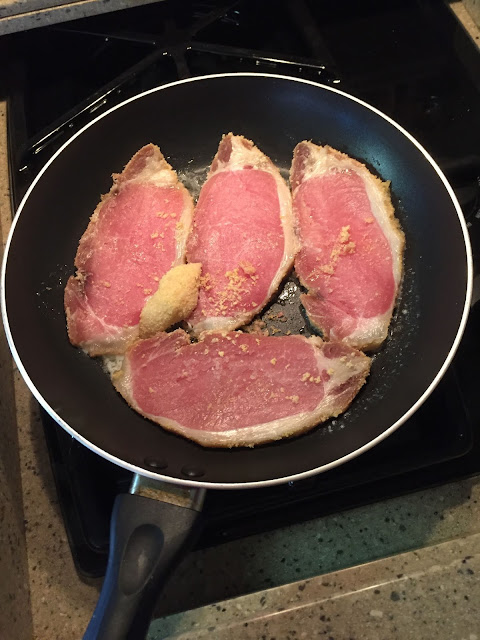- Ann Arbor, MI - https://www.usclimatedata.com/climate/ann-arbor/michigan/united-states/usmi0028
- Eugene, OR - https://www.usclimatedata.com/climate/eugene/oregon/united-states/usor0118
Anyway, while it rained last night (as usual), the sun came out for a few hours today, so I marched off to do my laundry in the RV park laundromat. While I was out, I took some photos of the stuff growing here in January.
I took this photo walking back from the office, where I went to pick up a couple of packages and my mail. There are still a lot of clouds, but the blue sky is unusual! Notice that the trees are leafless, but the grass is green and the pavement is still wet from the overnight rain. (The grey-green stuff in the distant trees is oakmoss, by the way, not new leaves. See below for details on this moss.)
Here is a closeup.
I don't know what kind of a shrub this is, but it has large buds on it in preparation for warmer weather.
There is even moss growing on the side of the roadway! Notice the stick on the lower left that has something grey-green growing on it.
My motorhome is on the right.
This is a small, ornamental tree growing next to my site. Notice that it has something growing on the branches.
A little research showed me that this is Oakmoss, which means this little tree must be a variety of oak: https://www.inaturalist.org/taxa/123175-Evernia-prunastri. Actually, it is really a form of lichen, in spite of its name. What is interesting is that it reminds me a lot of a kind of tree lichen found in Florida and called "Old Man's Beard." Here is an article on it: http://www.wildsouthflorida.com/old.mans.beard.lichen.html#.XDgx4Wl7mpo
Neither of these plants causes any damage to the trees because they get their nutrients and water from the air and stuff that lands on them. And strangely enough, they are used by the French perfume industry. I will have to sniff a sample on the next sunny day.
A lot of plants in Oregon remind me of the ones in swamps in Southern Georgia and Florida--lots of ferns, moss, and lichen. Here is a closeup of the small tree.
This is a very well-cared-for and nicely landscaped RV park. As you can see, the daffodils are also waiting for spring!
I am hoping to be back in warmer and sunnier locations by spring, however. With all the lichens and moss, I am afraid if I stay much longer, I will get covered.
















































